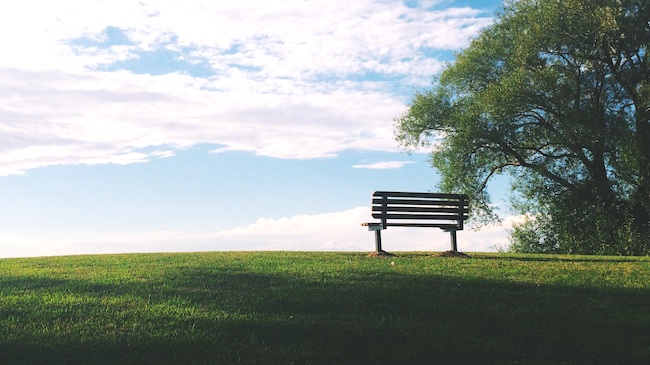
This weeks parsha, Tetzaveh, deals primarily with the garments of the Kohanim. Seemingly out of place are the first two pasukim which instructs us as to which oils are to be used for lighting the Menorah. The Menorah and the oil were already mentioned in last weeks parsha, and the actual lighting process will be dealt with in a later parsha. Why are these pasukim brought over here?
The Ohr Gedalyahu reveals a fascinating insight into these parshiyos. The building of the Mishkan, the topic of last weeks parsha, was to create an environment in this world, wherein the Shechinah would rest. Before the sin of Adam HaRishon, the whole world served such a purpose. This situation was rectified, to a degree, at Har Sinai, but was subsequently set back by the sin of the Egel, the Golden Calf. The Mishkan was a “Har Sinai”, a glimpse of the world that was – a world filled with Hashem’s presence. Hashem’s ‘movement’ towards us.
Our parsha, Tetzaveh, deals with the garments of the Kohanim. Our service to Hashem. The ‘movement’ that we make in order to bring about a reaction. The filling of this world with Hashem’s light.
The medrash says that although Hashem’s light fills the universe, He nevertheless, wants our light. He doesn’t need our light, but He leaves room for and desires our light. That is the avodah, the Divine Service, that is set aside for man to accomplish in this world. The Torah to be learned, the mitzvos to be performed, the acts of kindness to be generated. That is introduced by the garments of the Kohanim. We generate the ohr, the light.
Hashem avails Himself to us and draws close to us in the guise of the Mishkan – we draw close to Him and do our part, as exemplified by the holy garments. Parshas Trumah, His movement toward us – Parshas Tetzaveh, our movement toward Him. The result of these two movements – light.
Every aspect of the physical world mirrors that which transpires in the spiritual realm. Lightning is a result of a strong negative electrical pull of the clouds provoking a reaction of positive charges from the ground below. As sparks from the clouds make their way towards the earth, sparks from the ground shoot heavenward. Where the two meet, the brilliant flash of lightning is seen.
The beginning of our parsha is the flashpoint where these two spiritual movements meet. That brilliant flash is manifested by the light of the menorah. The ‘light’ of every mitzvah, epitomized by the mitzvah whose very essence is light – the pure oil eternally aflame on the Menorah.
From the garments of the Kohanim we can obtain much insight into our avodas Hashem. One of the recurring themes of the Sefer HaChinuch is that, “adam nifal k’fi pe’ulosov“, a person is strongly affected by his actions. We normally understand that we feel and therefore we act. Very often, the opposite is true – we act and therefore we feel. Take a kind person, appoint him to be an executioner, you’ll find that he is no longer quite as kind. Take a cruel person, appoint him to distribute candies to children, you’ll find that he’s no longer quite as cruel. Our actions act on us.
He applies this concept to the garments of the Kohanim. Those individuals who are the emissaries to atone and serve on behalf of Klal Yisroel, need to wear specific garments. Their bodies must be enclothed with constant reminders of Whom they stand before. As all Jews wear tefilin to stay aware, the Kohanim, who stand closer to Hashem, are required to have an even greater degree of awareness.
The Ketones, the long shirt like garment, extended to just above the heels and reached to the wrists. It was constantly in view. The Mitznefes, the wrapped turban, was 16 amos (about 32 feet) long. Regardless of which direction the Kohen shifted his eyes, the Mitznefes was seen. The Avnet, the belt, was 32 amos long! It bulged around the Kohen’s midsection so that his arms were constantly bumping against it. All of this served as a constant reminder of where he was and Whom he was serving.
In our quest to properly serve Hashem, it is crucial for us to retain that focus. Every morning, the Yeshiva is awoken to the ‘tune’ of the Mashgiach ‘singing’, “shtay uff, shtay uff, la’avodas haboreh”- wake up, wake up, to perform the will of the Creator. The Rashba explains that the reason for netilas yadayim, the washing of the hands in the morning, is because we, like the Kohanim in the Beis HaMikdash, are about to begin our divine service. We, therefore, like the Kohanim, must first wash our hands and prepare ourselves.
In this sensual, physical, materialistic world, we can so easily become distanced and detached from our very purpose. We learn from the garments of the Kohanim to focus on who we are and Whom we are serving.
The Ba’al HaTurim points out that Moshe Rabbenu’s name isn’t mentioned in our parsha. The Vilna Gaon explains that Moshe’s yahrtzeit, the seventh of Adar, usually falls before Tetzaveh. His name is omitted to show that he is no longer with us, his physical presence has gone, although the essence of his teachings are the lifeblood of our nation to this day.
This is also alluded to in our parsha. Every letter has its revealed and its hidden part. The word for the letter mem is written mem, mem. The first mem is revealed and the second is hidden. The letter shin is spelled shin, yud, nun. The shin is revealed, the yud and nun are hidden. The letter hay is spelled hay, aleph. The hay is revealed, the aleph is hidden.
The numerical value of the hidden letters of Moshe’s name, the mem (40), the yud (10), the nun (50) and the aleph (1), equal 101- the number of pasukim in this weeks parsha. This shows us that, even though the physical embodiment of Moshe left us at this time, the neshama, the soul of Moshe, revealed in the Torah, is very much with us even now.
May we merit to focus on the incredible opportunity and responsibility that we have as servants of Hashem. That our actions will illuminate this world, sending out thunderous messages of Hashem’s existence, presence and involvement.
Yisroel Ciner
Copyright © 1997 by Rabbi Yisroel Ciner and Project Genesis, Inc.
The author teaches at Neveh Zion in Telzstone (near Yerushalayim).


